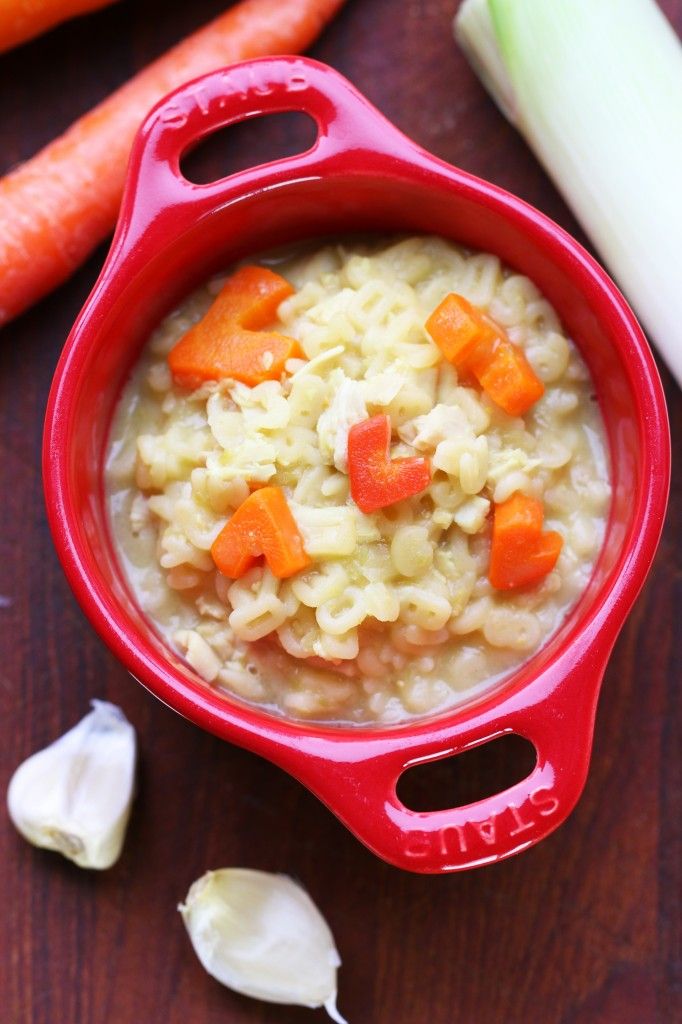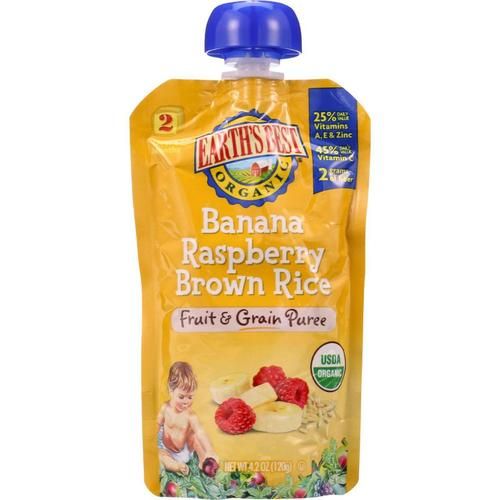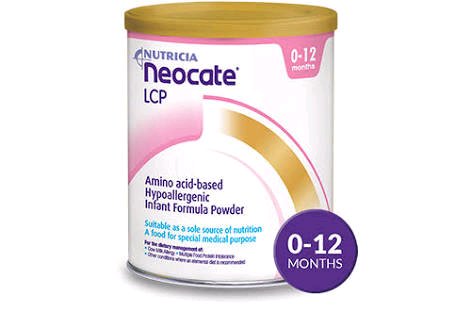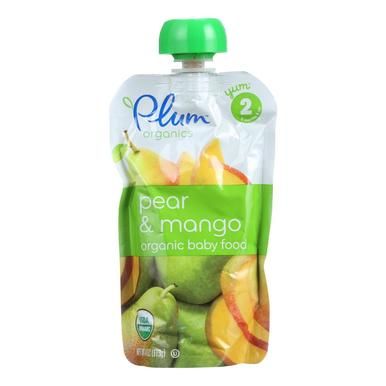When can baby move to stage 2 foods
What It Is, When to Start, and Options to Try
Accompanying your child through the different stages of learning how to eat real food is an exciting journey. Sometimes, along with the sense of pride — Look, they polished off the whole jar! — you can feel a little confused. How are you supposed to navigate the milestones?
Let’s start at the beginning: What do the stages of baby food mean, anyway?
Rome wasn’t built in a day, and your baby’s digestive system won’t make the leap from liquid to solid in one day either. That’s what the stages of baby food are for — to help your baby manage the mechanics of eating and to make the transition easier on your baby’s digestive system.
Defining the stages across the brands
While the different stages of baby food aren’t standardized (it would make your life easier if they were!), most popular brands more-or-less follow these four stages:
- Stage 1: 4 to 6 months (watery puree of a single ingredient)
- Stage 2: 6 to 9 months (thicker texture that is strained or mashed)
- Stage 3: 10 to 12 months (mush that has soft, chewable, small chunks)
- Stage 4: After 12 months (finger foods and small, soft pieces of foods you share from your own supper)
What is the difference between stage 1 and stage 2 food?
Stage 1 foods are pretty watery. They’re pureed into a smooth paste that can drip off a spoon easily, so stock up on your bibs. These foods are usually made of a single ingredient: oatmeal cereal, apple, carrots. Your baby will start off eating about half a teaspoon of this.
Stage 2 foods get more exciting. These are strained or mashed into a dense paste. They’re made with a combination of foods that can include legumes and even meats or fish. They may combine flavors, like fruit and veggie blends. Your baby’s appetite is growing and you’ll have to keep pace with bigger portions.
At around 6 to 9 months, your baby is probably ready to move on to stage 2 foods. Not every baby will stick to this schedule simply because every child is a world to their own.
Here are some signs that your child is ready to move on:
- Tongue reflex: At around five months, your child will start losing their tongue thrust reflex and won’t immediately push out the food that you try to feed them.

- More please: They’ll easily polish off the stage 1 foods and look hungry for more.
- Variety: They’ll have eaten foods from all the food categories (vegetables, fruits, legumes, grains, meat) and shown no allergy or intolerance.
- Enjoyment: They’re managing spoonfuls of stage 1 foods easily, mouthing and swallowing happily.
At this exciting stage, feel free to give your baby most types of foods. By offering them a wide range of tastes and textures, you’re giving them a foundation for healthy eating habits — as well as making it easier for yourself. Keep in mind the following safety points:
- Choking hazards: Avoid nuts, seeds, and popcorn at this stage. And make sure to slice round foods like grapes and hot dogs lengthwise.
- No honey: Children younger than 12 months should not be given honey because it could lead to a botulism infection.
- No juice: Follow AAP guidelines and stick with breast milk, formula or a little water and steer clear of juices.

- Safe feeding: Always strap your child into their high chair and keep an eye on them while they’re eating.
And if you’re wondering about peanuts, here’s the scoop: A 2017 release from the National Institutes of Health suggests exposing children to peanut-containing foods as early as 4 months old. (Wait till 6 months for children with mild or moderate eczema.)
Surprised? Don’t be. A recent study suggested that Israeli kids rarely suffer from peanut allergies because they’re munching on Bamba, a peanut-based snack, from as early as 3 months. Talk to your doctor about suggested safe ways to incorporate peanut products into your little one’s diet.
What’s on the menu for stage 2 baby foods? Basically, you can go the store-bought or the homemade route. Or you can mix both depending on how much time you have. It’s up to you and your personal schedule.
Here are tasty ideas for both options.
Store-bought stage 2 baby food
- Plum: These organic blends come in easy-to-transport pouches.
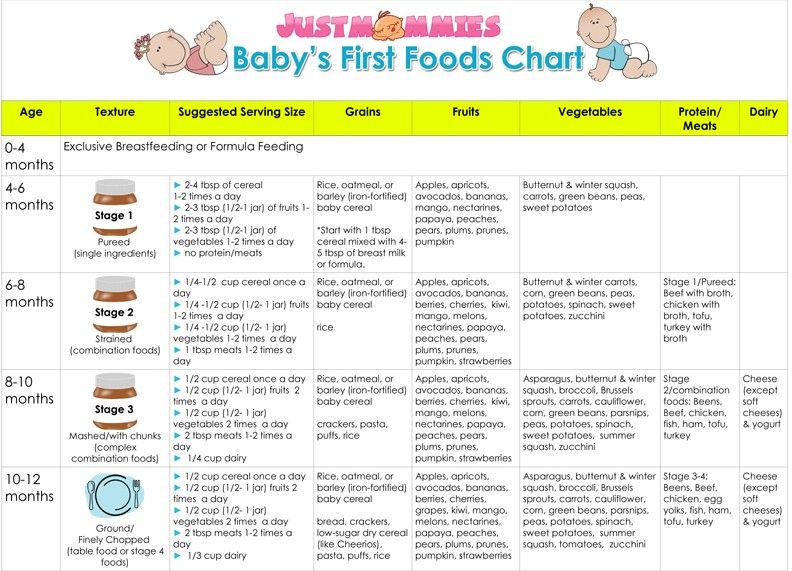 Try pear, spinach, and pea, or banana and pumpkin.
Try pear, spinach, and pea, or banana and pumpkin. - Beech-Nut: Options are available in jars and pouches. Serve up some apples and bananas or pineapple, pear, and avocado.
- Earth’s Best: Another organic option, in pouches or jars. Try sweet potato, barley, and garbanzo or pasta with tomato and white bean.
- Gerber: A classic, whether served up from plastic tubs, jars, or pouches. Flavor combinations include peach mango and oatmeal or chicken noodle dinner.
Remember to monitor your little one while they’re eating. Pouches are handy, but the caps can be a choking hazard. Glass jars are at risk of breaking, so keep them out of baby’s reach. Your baby should always enjoy snacks and meals with attentive adult supervision.
Homemade stage 2 baby food
Cooking up a storm for your baby’s budding taste buds at this stage doesn’t have to be challenging. Here are a few recipes to get you going. (You can find even more baby food recipes here. )
)
Don’t shy away from spices and herbs: your baby will appreciate the added flavor, and the micronutrients in them will give their immune system a boost.
- Apple, butternut, and carrot: Boil the ingredients until they test soft with a fork. Drain some of the water, but set it aside in case you need to thin the mixture. Sprinkle in a little curry and blend.
- Blueberries and chickpeas: You can cook up your own chickpeas or use a prepared version to save time. Mix equal amounts of blueberries and chickpeas. Blend and add breastmilk, formula, or water to get the right consistency. You can also add in some rice for extra oomph and texture.
- Salmon with roasted zucchini and fennel: Spray the salmon and vegetables with oil and broil for about 15 minutes. Add chopped parsley and blend. You can thin the mixture with breastmilk, formula, or water.
Enjoy this stage with your baby because it won’t be long before they move on to the next stages.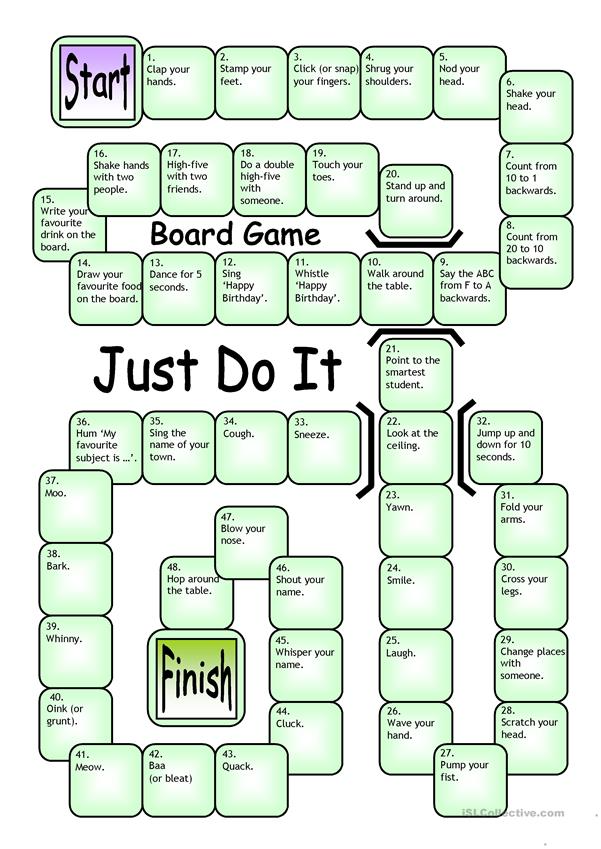 And then, sooner than you think, you may be facing competition for that last slice of caramel-topped cheesecake.
And then, sooner than you think, you may be facing competition for that last slice of caramel-topped cheesecake.
When is a child ready to try a bit more texture?
Once your baby has mastered the art of slurping down smooth purees, it may be time to expand their culinary horizons with Stage 2 baby food. Your little gourmand isn’t quite ready to dine on a plate of spaghetti and meatballs just yet, but Stage 2 foods will give them the opportunity to sample new tastes, as well as consistencies.
Think your baby is ready to graduate onto the next stage of baby food? Here, parents and experts weigh in on Stage 2 baby food. Bon appetit!
What is Stage 2 baby food?
While the jarred Stage 2 baby food you find at the store is typically combinations of food (“sweet potato and chicken dinner”), it’s important to keep in mind this stage is more about the consistency of the food.
“While Stage 1 baby food is completely pureed, Stage 2 baby food has a bit more texture to it,” says Dr. Zulma Laracuente, a pediatrician in Alexandria, Louisiana. “The concept behind slowly transitioning baby from purees to thicker solids is to get them used to chewing and swallowing.”
Zulma Laracuente, a pediatrician in Alexandria, Louisiana. “The concept behind slowly transitioning baby from purees to thicker solids is to get them used to chewing and swallowing.”
Of course, every child develops at their own individual pace, so check with your child’s doctor for baby food recommendations during the first 12 months.
When to start Stage 2 baby food
The Stage 2 baby food age may vary based on when your infant started eating Stage 1 foods. The general age recommendation for Stage 1 baby food is between 4 and 6 months, so taking into consideration how long — and how well — your child has been eating these foods will help you determine if they’re ready to move up. According to Laracuente, babies are usually ready for Stage 2 between 6 and 8 months old — but make sure your little one has honed their Stage 1 skills before making the leap.
“Once your baby has done well with Stage 1 solids and has tried multiple foods, it is safe to advance to Stage 2 baby food,” says Dr. Melanie Custer, a pediatrician at at West Bend Pediatrics at Children’s Hospital of Wisconsin. “These foods usually have multiple ingredients, including some spices and are thicker in consistency.”
Melanie Custer, a pediatrician at at West Bend Pediatrics at Children’s Hospital of Wisconsin. “These foods usually have multiple ingredients, including some spices and are thicker in consistency.”
“These foods usually have multiple ingredients, including some spices and are thicker in consistency.”
DR. MELANIE CUSTER, PEDIATRICIAN
Signs baby is ready to start Stage 2 food
How do you know if your baby is nailing it with their Stage 1 foods and ready for the next step? Simply put, they’re eating and swallowing.
“As your baby’s oral skills develop and improve, you can move on to Stage 2 foods, which are purees with small chunks and texture,” says Jenifer Thompson, R.D., an advanced practice dietician at Johns Hopkins in Baltimore.
Thompson says in order to move on to Stage 2 foods, babies should be consistently taking the spoon in their mouth when you offer it to them, without spitting or pushing it back out.
“Once my baby was no longer grimacing or letting his food dribble onto his chin, I knew we were ready to move onto Stage 2 foods,” says mom of two Darcy McConnell of Garwood, New Jersey. “I actually have no idea how old he was when we made the switch since I based it off of how well he was eating!”
“I actually have no idea how old he was when we made the switch since I based it off of how well he was eating!”
What Stage 2 baby foods to start with
It’s important to expose your child to a number of foods, most of which are safe at this point.
“By the time they are 7 to 8 months, babies should be eating a variety of foods from different food groups, including cereals, meat and other proteins, yogurt, cheese, vegetables and fruits,” says Thompson.
“Most foods can be prepared for any stage, so long as they’re texturally age-appropriate,” says Dr. Kristen Treegoob, a pediatrician at Children’s Hospital of Philadelphia. “When we think of Stage 2 baby food, we’re thinking of thicker purees with some mashable bits.”
Experts advise introducing as many different foods as possible during this stage of food development so your baby gets accustomed to them.
“While bananas, applesauce and peaches are good options and most babies like them, as they are naturally sweet, it is also important to try other foods that aren’t as common and popular, such as beets, rhubarb and asparagus, so they develop a taste for them,” says Custer.
Another thing to keep in mind is that the American Academy of Pediatrics (AAP) no longer recommends delaying the introduction of allergenic foods, particularly peanuts. While it was once advised to wait until your baby was at least 10 months to introduce peanut-containing foods, the AAP now recommends giving babies with no known egg allergy or eczema, infant-safe forms of peanut between 4 to 6 months old. Babies with mild eczema should wait until at least 6 months, and for babies with severe eczema, speak to their doctor before giving them peanut-containing foods. (To find out if your baby has an egg allergy, they must be tested by their pediatrician.)
Which foods to avoid during Stage 2
Even though your little one is venturing into new food texture territory with Stage 2, you should still avoid giving them chunks and small pieces of food, which can pose a serious risk. (Food may be thicker at Stage 2, but it’s still all about the purees and mashes at this point.)
“Infants may have any food that is texture-appropriate for their developmental feeding stage, but it’s important to stay away from choking hazards, such as whole grapes, nuts and seeds,” says Treegoob.
“Infants may have any food that is texture-appropriate for their developmental feeding stage, but it’s important to stay away from choking hazards, such as whole grapes, nuts and seeds.”
DR. KRISTEN TREEGOOB, PEDIATRICIAN
Also, avoid giving your baby honey — raw or cooked — before the age of 12 months, as it may cause a botulism infection.
And finally, when it comes to your baby’s beverage, steer clear of juice. The AAP recommends parents eschew juice, which has “no nutritional benefits over whole fruit,” until at least 1. “At this point, it’s best to stick with breast milk, formula or the odd bit of water (1 to 2 ounces a day), which is mainly for introducing your baby to the skill of using a sippy cup,” says Thompson.
How to start Stage 2 foods safely
Baby should be sitting in a highchair when eating and never left alone. You’ll still be spooning food into your baby’s mouth at this point, but don’t be afraid to let your little one take a whirl at self-feeding in order to get in some practice using utensils.
“At around 9 months, we started letting our son try his hand at feeding himself in his highchair,” says mom of two Erin Henderson, of Waltham, Massachusetts. “It was a mess, but he obviously enjoyed the learning experience.”
Also, during the latter half of your baby’s Stage 2 stint, they may learn how to grab things with their thumb and forefinger and bring them to their mouth.
“Between 8 and 12 months, babies develop the pincer grasp ability and should be able to pick up small pieces of finger food, such as Cheerios or puffs,” says Thompson.
As your baby grows and hones their eating skills, they’ll cut down a bit on how much breast milk or formula they drink — but keep in mind, that should still be their primary source of nutrients.
“Most infants will naturally start to moderate their breast milk or formula intake once their solid intake increases,” says Treegoob. “Solid food may start to account for a significant source of nutritional intake closer to 7 to 9 months.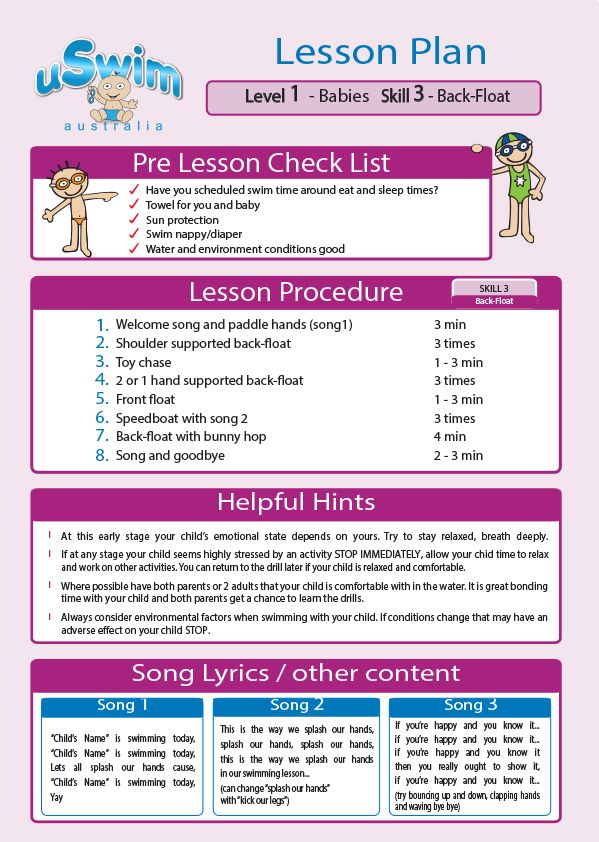 At this time, parents may notice that their baby shows interest in smaller or less frequent bottle or breastfeeds. As long as their weight remains on track and baby is drinking enough milk to stay well-hydrated, there should be no need for concern. Infants typically take somewhere between 24 to 40 ounces of breast milk or formula between 4 to 6 months and 24 to 32 ounces from 6 to 9 months.”
At this time, parents may notice that their baby shows interest in smaller or less frequent bottle or breastfeeds. As long as their weight remains on track and baby is drinking enough milk to stay well-hydrated, there should be no need for concern. Infants typically take somewhere between 24 to 40 ounces of breast milk or formula between 4 to 6 months and 24 to 32 ounces from 6 to 9 months.”
According to the AAP, babies should be eating about 4 ounces of solids (about one small jar of baby food) at each of their meals. And if you’re wondering how long baby food lasts, experts typically recommend 24-48 hours in the fridge or up to 3 months in the freezer.
Lastly, bear in mind that if at first you don’t succeed with a food, try, try again.
“At this age, if babies grimace when taking a bite or shake themselves, it is most often because of a texture issue, not the actual taste,” says Custer. “It is important to keep introducing these foods as it may take a baby up to 15 times to get used to a texture before you can say for sure he/she doesn’t like it. ”
”
Ready for the next stage?
- Stage 3 baby food
Rules for the introduction of complementary foods for a child 4 - 12 months: the first complementary foods, menus, diagrams, tables, principles of nutrition for a baby
Modern principles of complementary foods for children is a kind of fusion of practical experience and the latest scientific developments. They are based on the recommendations of the European Association of Pediatric Gastroenterologists, Hepatologists, Nutritionists ESPGHAN , the American Academy of Pediatrics AAP and national recommendations of relevant ministries and associations. nine0004
Complementary foods: online course
Modern recommendations are based on the analysis of the results of many studies on the composition, timing of the introduction of complementary foods in Europe for healthy full-term newborns, taking into account various aspects of the introduction of complementary foods, its impact on physical and mental development. Timely introduction of complementary foods contributes to the optimal development of all systems and organs of the child, physical parameters, psychomotor development, and the activity of the nervous system. The period of introduction of complementary foods is very important for the growth and development of the child, as well as an outstanding stage in the transition of the child from breastfeeding to feeding from the general table. nine0013
Timely introduction of complementary foods contributes to the optimal development of all systems and organs of the child, physical parameters, psychomotor development, and the activity of the nervous system. The period of introduction of complementary foods is very important for the growth and development of the child, as well as an outstanding stage in the transition of the child from breastfeeding to feeding from the general table. nine0013
- It is inappropriate to develop separate recommendations for the introduction of complementary foods for breastfed or artificially fed children, the approaches in these cases are the same
- Breastmilk mothers remains the gold standard exclusive breastfeeding for at least 4 months (17 weeks) of an infant's life, up to 6 months (26 weeks), the standard of exclusive or predominant breastfeeding
- The digestive tract and kidney function are mature enough for a baby to accept complementary foods at 4 months of age, and between 5 and 6 months the baby develops the necessary motor skills to consume solid foods.
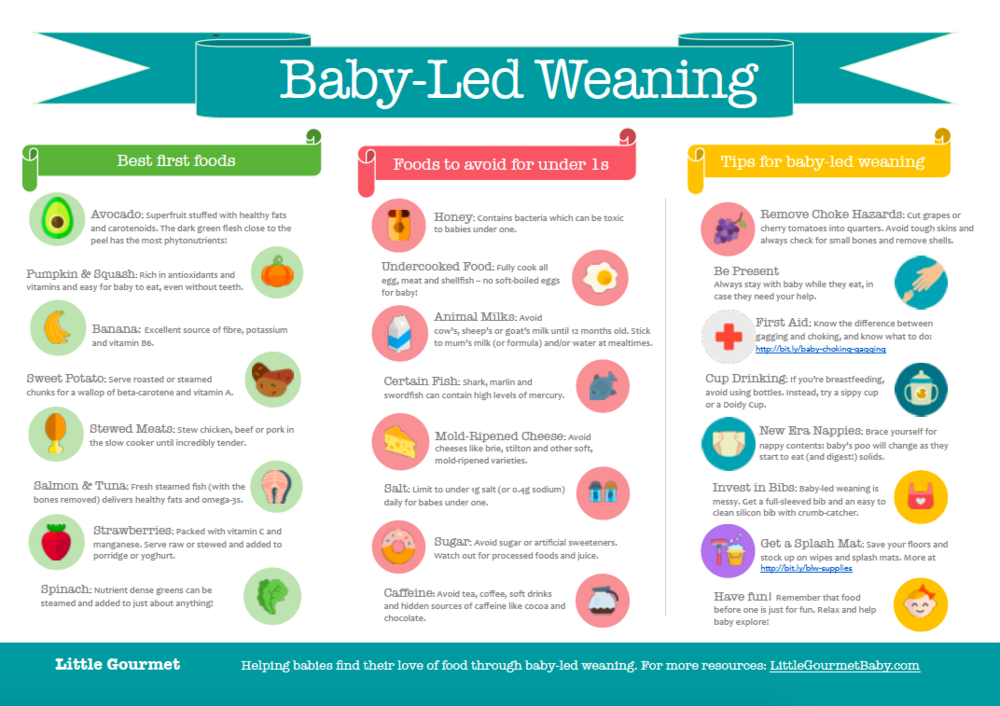 Therefore, at this age, it is important to give food of the right consistency and in the right way
Therefore, at this age, it is important to give food of the right consistency and in the right way - A well-nourished mother can provide all the nutrients, vitamins, and minerals her baby needs through exclusive breastfeeding up to a maximum of 6 months of age
- Some children may need iron supplementation earlier than 6 months
- It is important to continue breastfeeding in parallel with the introduction of complementary foods. This has been shown to reduce the risk of gastrointestinal and respiratory infections, as well as hospitalizations in a child
- Comparing the initiation of complementary foods at 4 or 6 months of age, no significant differences were found in the effect on growth and body weight, the development of obesity during the first 3 years of life
- At the same time, a high risk of developing overweight and obesity has been established with the introduction of complementary foods before 4 months of age
- Complementary foods (solid or liquid food other than breast milk or infant formula) should be started no earlier than 4 months and no later than 6 months
- With age, with the introduction of complementary foods, the child should be offered food varied in texture, texture, taste, smell
- Children have an inborn tendency to distinguish and prefer sweet and salty foods, reluctantly eat bitter, which we cannot change.
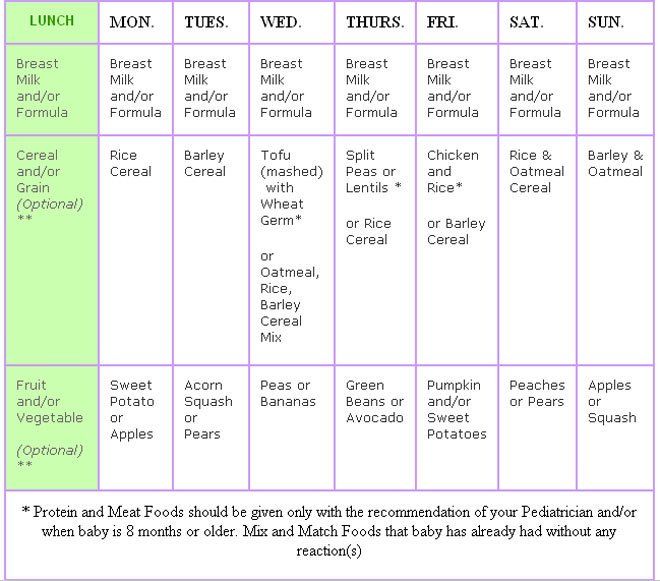 But we can shape and adjust the child's taste preferences through training, systematically offering the child foods with different tastes, including sour, bitter green vegetables
But we can shape and adjust the child's taste preferences through training, systematically offering the child foods with different tastes, including sour, bitter green vegetables - Whole cow's milk Not recommended for infants under 12 months of age. The use of cow's milk is associated with the intake of an increased amount of energy, protein, fats, and lower - iron. Therefore, children who consumed large amounts of cow's milk at an early age had a higher risk of developing iron deficiency anemia
- Eating more protein when complementary foods increase the risk of overweight and obesity, especially in individuals with a predisposition to this, so protein intake should not exceed 15% of energy intake during the day
- The baby's need for iron is very high during the entire period of complementary feeding, so it is necessary to ensure the provision of iron-rich foods, especially for breast-fed children
- Allergenic products can be administered from the age of 4 months at any time, since it is during this period that the formation of immune tolerance to the allergen occurs.
 For example, children at high risk of developing allergic reactions to peanuts should be administered at 4-12 months of age under specialist supervision. No relationship was found between the timing of the introduction of allergenic complementary foods and the development of allergic or immunological diseases. However, this does not mean the need for early introduction of allergenic products to everyone, but it emphasizes that there is no need to postpone the introduction of allergenic products after 4 months for a longer period; nine0034
For example, children at high risk of developing allergic reactions to peanuts should be administered at 4-12 months of age under specialist supervision. No relationship was found between the timing of the introduction of allergenic complementary foods and the development of allergic or immunological diseases. However, this does not mean the need for early introduction of allergenic products to everyone, but it emphasizes that there is no need to postpone the introduction of allergenic products after 4 months for a longer period; nine0034 - Gluten may be offered to a child aged 4-12 months, however large amounts of gluten should be avoided during the first weeks after initiation of its introduction, thereafter a safe amount has not been established. The type of feeding (breast/artificial) was not identified with the introduction of gluten to reduce the risk of developing celiac disease, type 1 diabetes;
- Sugar or salt should not be added to complementary foods, and sweetened drinks and juices should be avoided.
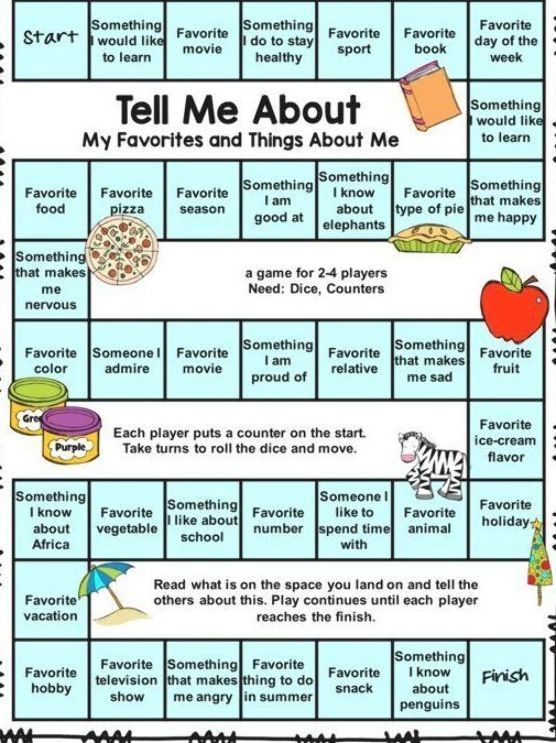 Sugary drinks are liked by babies in the first months, but if they are not given, but after 6 months, the children no longer like them very much. Sugar affects future eating behavior. Sugar is an important factor in the development of caries - it contributes to caries, as glucans can be formed, which increase the adhesion of bacteria to tooth enamel, disrupt the diffusion balance of acid and buffer systems, which ultimately contributes to damage to the enamel. nine0034
Sugary drinks are liked by babies in the first months, but if they are not given, but after 6 months, the children no longer like them very much. Sugar affects future eating behavior. Sugar is an important factor in the development of caries - it contributes to caries, as glucans can be formed, which increase the adhesion of bacteria to tooth enamel, disrupt the diffusion balance of acid and buffer systems, which ultimately contributes to damage to the enamel. nine0034 - Vegetarian diets are contraindicated in young children due to the risk of vitamin B12, iron, zinc, folate, long-chain fatty acid, protein and calcium deficiencies, which can lead to irreversible adverse effects and impaired cognitive development;
- Vegetarian diet can only be used under the close supervision of a doctor and nutritionist, with the obligatory additional administration of vitamins B, D, iron, zinc, calcium, proteins, PUFAs, which can ensure the appropriate growth and development of the child.
 It is important that parents should be aware of the risk of irreversible harmful consequences (mental disability, death of the child) that may develop if they do not follow the recommendations of specialists. nine0034
It is important that parents should be aware of the risk of irreversible harmful consequences (mental disability, death of the child) that may develop if they do not follow the recommendations of specialists. nine0034
The General Rules for the introduction of complementary foods for children of the first year of life:
- Introduce the first feeding It is better in the morning feeding 9-11 in the morning to trace the reaction of the child to the new product.
- Without added sugar and salt .
- Give the first complementary food to the child when he is calm and not tired .
- Start with 0.5-2 teaspoons. If the child refuses, do not insist, try to give later or the next day.
- If the reaction is normal - no rash, no skin changes, no stool changes, double the dose the next day.
 Gradually bring the first complementary foods of the child to the age norm 80-200 g
Gradually bring the first complementary foods of the child to the age norm 80-200 g - If there is an allergic reaction or other intolerance reaction - refuse to introduce this complementary food for three days, if the adverse reaction occurs again - do not give this product, contact your pediatrician. nine0034
- Each subsequent new complementary food must be one-component only: marrow, cabbage, broccoli, buckwheat, meat, etc.
- Mixed food dish give when the child has already become acquainted with all the products separately.
- It is not advisable to introduce new foods three days before and after vaccinations.
If you are thinking about introducing complementary foods, then your child should already have certain signs of readiness for this:
- Holds head
- Able to stand alone, practically without support, sit on a special high chair with side support
- Opens mouth when a spoonful of food is brought
- Turns away from a spoonful of food when not hungry
- Closes mouth with spoon in mouth holds food in mouth and then swallows rather than pushing or spitting it out
The first complementary foods at 4 months
The age of 4 months as the minimum for the introduction of complementary foods was also chosen because at 4 months the child's gastrointestinal tract becomes more mature: the initially increased permeability of the small intestine mucosa decreases, the number of digestive enzymes, a sufficient level of local immunity is formed, the child acquires the ability to swallow semi-liquid and thicker food, associated with the extinction of the “spoon ejection reflex”. nine0013
nine0013
Therefore, to the question whether it is necessary to give complementary foods to a 3-month-old baby , one can unequivocally answer: no, it's too early!
But 4 months, this is the time when you can think about the introduction of complementary foods. At the same time, it should be remembered that at the age of 4 months, the child has enough mother's milk or a highly adapted milk formula for its full development. In addition, when they talk about complementary foods at 4 months, they usually mean the end of the 4th month of life. It is important to continue breastfeeding in parallel with the introduction of complementary foods. nine0013
Video: Body in 4 months
If you introduce complementary foods at the 4th month of the child -usually one-component vegetable or fruit puree if the child does not gain weight well enough well , then it can be gluten-free porridges: rice and buckwheat .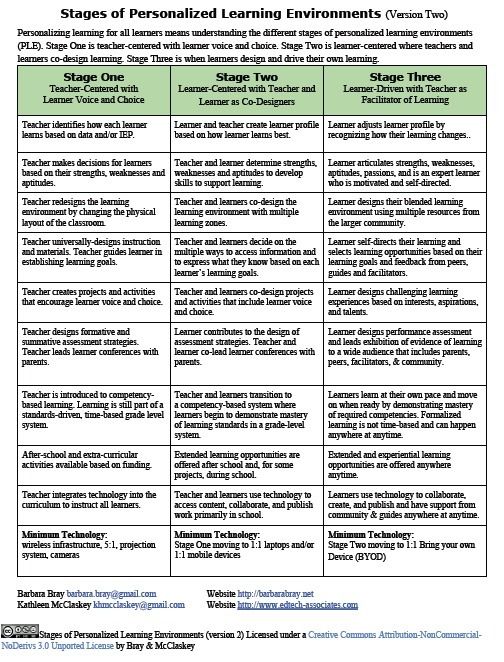 It is better to start with vegetable puree. Kids are smart and if he tries a sweeter fruit puree, he can refuse vegetable puree for quite some time and you may have difficulty introducing this very healthy dish. nine0013
It is better to start with vegetable puree. Kids are smart and if he tries a sweeter fruit puree, he can refuse vegetable puree for quite some time and you may have difficulty introducing this very healthy dish. nine0013
What is useful in vegetable supplements and what is the best way to prepare it?
Vegetable puree - for the first feeding can be prepared from cauliflower, zucchini, pumpkin, broccoli - these are low-allergenic foods, are among the ten most useful vegetables in the diet of children, contain a large amount of healthy proteins, fiber and vitamins, microelements ! Fiber helps move food through the digestive tract and promote beneficial microflora in the gut. Pectins absorb and remove toxins from the baby's body. Vegetables have a positive effect on the acid-base balance of the body, creating conditions for the proper functioning of all organs and systems. nine0013
Cauliflower - is a good source of fiber, protein, minerals and vitamins: A, B1, B2, B3 (PP), B6, as well as a small amount of vitamins K, D and tocopherol (vitamin E).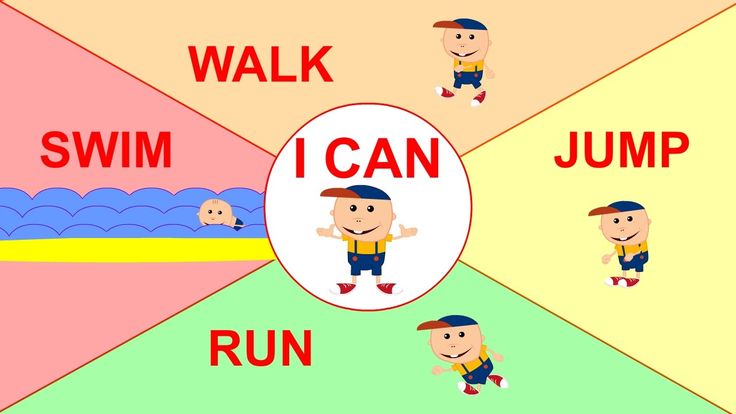 In the inflorescences of cabbage there is a lot of magnesium, sodium, potassium, phosphorus, calcium, iron. It contains twice as much iron as green peas, peppers and lettuce. Cauliflower protein is easily digestible and its content is quite high. Cauliflower protein contains essential vitamin U (methionine). It is one of the essential amino acids that cannot be synthesized by the human body. Other essential amino acids are also present in a small amount: arginine, tryptophan. nine0013
In the inflorescences of cabbage there is a lot of magnesium, sodium, potassium, phosphorus, calcium, iron. It contains twice as much iron as green peas, peppers and lettuce. Cauliflower protein is easily digestible and its content is quite high. Cauliflower protein contains essential vitamin U (methionine). It is one of the essential amino acids that cannot be synthesized by the human body. Other essential amino acids are also present in a small amount: arginine, tryptophan. nine0013
Zucchini - rich in vitamins and microelements. It contains potassium, magnesium, phosphorus, calcium, vitamins C, B1 and B2 and others, folic acid. Which plays an important role in the processes of hematopoiesis. Zucchini is rich in such important trace elements as iron and copper. They are necessary for the formation of nervous tissue, normalization of metabolism, as well as for the formation of hemoglobin, which is a good prevention of anemia.
Broccoli is a very healthy vegetable that is a type of cauliflower.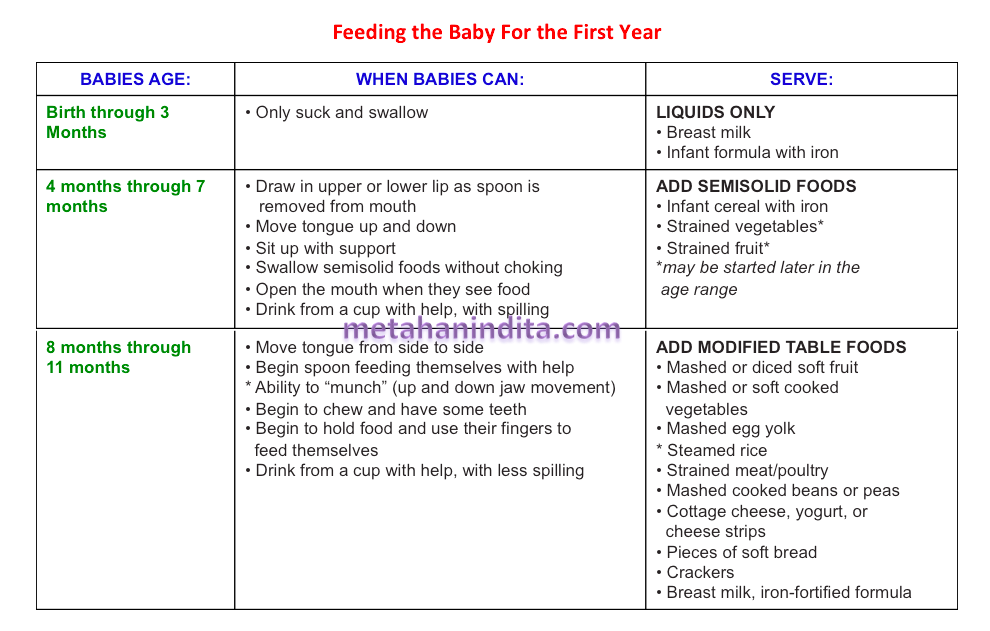 Pleasant soft taste and good digestibility of the product, unique composition have a beneficial effect on the health of both adults and children. Eat unopened cabbage inflorescences. This is also a low-allergenic vegetable, rich in protein, fiber, vitamins, calcium, iron, trace elements and even phytoncides. The content of calcium and magnesium is sufficient to balance the functioning of the nervous system, ensure the normal regulation of the child's sleep and wake cycle, and good stress resistance. A child with such nutrition becomes calmer, less excited and naughty. nine0013
Pleasant soft taste and good digestibility of the product, unique composition have a beneficial effect on the health of both adults and children. Eat unopened cabbage inflorescences. This is also a low-allergenic vegetable, rich in protein, fiber, vitamins, calcium, iron, trace elements and even phytoncides. The content of calcium and magnesium is sufficient to balance the functioning of the nervous system, ensure the normal regulation of the child's sleep and wake cycle, and good stress resistance. A child with such nutrition becomes calmer, less excited and naughty. nine0013
Broccoli is the leader in choline and methionine content. Only 50 g of broccoli provides the baby with a full set of nutrients for a day.
Pumpkin - the largest vegetable on Earth. It is one of the ten most useful vegetables in the diet of children, contains a large amount of useful proteins, fiber and vitamins, including beta-carotene, vitamin C, E, K, iron, potassium, magnesium, trace elements that are indispensable for children's nutrition, as they strengthen immunity and help fight inflammation, have a beneficial effect on the nervous system. By the content of carotene, pumpkin exceeds carrots by 5 times. nine0013
Vitamins and microelements contained in pumpkin help the child grow, provide healthy sleep, are responsible for the condition of the skin and eyes, improve metabolic processes, and accelerate the removal of harmful substances from the child's body. Due to its beneficial qualities, pumpkin can be one of the first types of complementary foods for an infant.
All vegetable purees have a specific vegetable smell, this is absolutely normal
0006
Introduction of vegetable puree
Vegetables should be introduced into the child's menu gradually. Start giving each new vegetable in the form of a monocomponent puree in the amount of ½ teaspoon, preferably at breakfast, so you can track the manifestations of food allergies or intolerance reactions to this product. If all is well, then the next day, offer him a teaspoon. So gradually you need to bring the portion to 50-100 grams. A serving of vegetable puree per day for an 8-month-old baby is approximately 80 grams. In a year, you can increase up to 150 grams. The next product can be administered no earlier than 4-5 days later. If a child has skin rashes, his stool has changed, then you need to remove the product from the diet and consult a pediatrician. nine0013
If the child does not like the dish, for example, broccoli, do not give up and continue to offer this vegetable in small quantities - 1-2 spoons a day, maybe not even once, but 2-3 times before meals, and after 7 - 10, and sometimes 15 days, the baby will get used to the new taste. This diversifies the diet, will help form the right taste habits in the child.
Fruit puree introduction
Fruit puree is a definite alternative and addition to vegetables. It can be made from apples, bananas - by the way, do you know what a berry is?, sweet varieties of pears. These fruits contain substances useful for babies, vitamins and minerals, including iron, which is extremely necessary for children. Prune puree is somewhat separate, it has a good effect on the baby's digestion, especially with a tendency to constipation, and, of course, also contains many useful substances.
Prune puree is somewhat separate, it has a good effect on the baby's digestion, especially with a tendency to constipation, and, of course, also contains many useful substances.
Porridges in the nutrition of a child in the first year of life. nine0005
Porridge can be introduced into the baby's diet at the end of 4 months or at the fifth, sixth month of life. As a rule, they go as a second food after vegetable or fruit puree. But if your child is not gaining weight very well, or you have been feeding your child with breast milk or infant formula until almost the end of 6 months, then complementary foods can be started with the introduction of cereals.
It is important to start with one-component, low-allergenic cereals which does not contain gluten : this is buckwheat, rice, corn porridge .
gluten-containing cereals include: wheat, oats, rye, barley, millet .
According to modern data , the period of introduction of gluten into the child's diet is not of fundamental importance, but the latest recommendations draw attention to the fact that its amount in the baby's diet should not be large. Therefore, it is better to add semolina and oatmeal to other porridge in a limited amount, and not to give it on its own. No relationship was found between the timing of the start of complementary foods that contain gluten and the development of celiac disease in a child. If your child hasn't tried porridge yet, start with a dairy-free, gluten-free, one-ingredient buckwheat or rice porridge. nine0013
Rice - very useful for growing baby. It has a low content of vegetable proteins, therefore it is easily digested and is especially useful for toddlers with unstable stools. Rice has a high nutritional value and, to a certain extent, protects the delicate intestines of the baby due to its enveloping effect. This is a hearty and nutritious dish with a good content of carbohydrates and proteins, potassium and magnesium, calcium and phosphorus, beneficial amino acids and vitamins. It replenishes energy costs, energizes and gives strength. Rice is not recommended for overweight children and those who suffer from severe constipation. nine0013
This is a hearty and nutritious dish with a good content of carbohydrates and proteins, potassium and magnesium, calcium and phosphorus, beneficial amino acids and vitamins. It replenishes energy costs, energizes and gives strength. Rice is not recommended for overweight children and those who suffer from severe constipation. nine0013
Gluten-free buckwheat porridge - very nutritious and rich in iron, fiber, rich in various vitamins and microelements. This is also a good option for starting a child's acquaintance with adult food. These porridges can be prepared with water, breast milk, milk formula, which your child is used to. No need to add salt and sugar.
Rules for introducing porridge into baby food
If the child already eats porridge from 5 months, then at 6 months you can offer a more complex porridge - for example, rice porridge with apricot or raspberries, rice porridge with banana (this is very successful a combination both in taste and in its properties) or even more complex porridge - corn-rice with banana. nine0013
nine0013
Over time, you can start adding apple, banana, pear, plum and prunes, apricot and dried apricots, broccoli, carrots, berries to porridge, , provided that the child is not allergic to them.
The rules for introducing cereals are the same as for vegetable puree. In order for the child to get used to the new product and its consistency more easily, first prepare 5% porridge (5 g of cereal per 100 g of water), if you make it yourself. Porridge is usually cooked with water, but can be made with breast milk, infant formula. First, give the baby one teaspoon, then, within 7-10 days, bring the volume of porridge of the same percentage to the full volume of feeding (150 g). If all this time the porridge is well tolerated, i.e. there are no skin rashes, the child has stable stools, they switch to a gradual (starting from 20-30 g) introduction of porridge of the same cereal, but already at a 10% concentration (10 g of cereal per 100 g of water). In other words, a thicker porridge is administered no earlier than 7-10 days from the beginning of the introduction of porridge. The complete introduction of 10% porridge to the baby is also carried out in 7-10 days. The third week falls on the complete addiction of the child to a new dish. Only after that you can introduce a new cereal (in the form of 10% porridge) or the next complementary foods. nine0013
In other words, a thicker porridge is administered no earlier than 7-10 days from the beginning of the introduction of porridge. The complete introduction of 10% porridge to the baby is also carried out in 7-10 days. The third week falls on the complete addiction of the child to a new dish. Only after that you can introduce a new cereal (in the form of 10% porridge) or the next complementary foods. nine0013
Video: feeding porridge
You need to give porridge from a spoon, better in the morning for breakfast. After porridge at the stage of its introduction, the child should be offered breast or milk formula. With artificial feeding, the volume of the mixture after a portion of porridge should be such that, together with porridge, it is 200 ml with five meals a day.
Norms for the introduction of cereals
In the future, the volume of the portion of porridge gradually increases, amounting to:
- 7-8 months - 160-170 ml
- 8-9 months - 170-180 ml
- 9-12 months - up to 200 ml (there is a complete replacement of one feeding of the child with complementary foods.
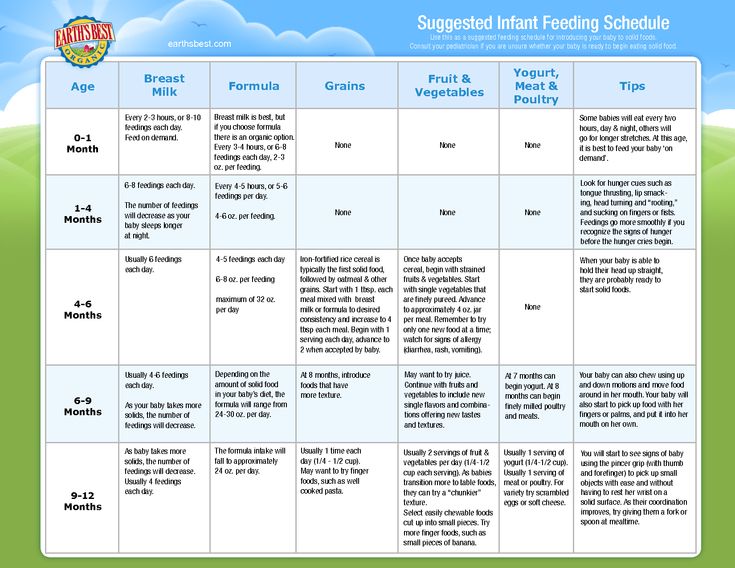 )
)
Cereal schedule
- Day 1 – 1 teaspoon (5 g)
- Day 2 - 2 teaspoons (10 g)
- Day 3 - 3 teaspoons (15 g)
- Day 4 - 4 teaspoons (20 g)
- Day 5 - 50 ml (50 g)
- Day 6 - 100 ml (100 g)
- Day 7 - 150 ml (150 g)
Meat complementary foods - the rules for introducing meat into the child's diet
Meat is usually the third, very important product of complementary foods, after vegetables and cereals. The meat contains amino acids, complete animal protein, B vitamins (B1, B2, B6 and B12), heme iron, potassium, calcium, zinc, phosphorus, which are necessary for the growth and development of the child. It is very important to understand that mashed meat contains iron, which is easily absorbed. And the addition of meat to vegetables improves the absorption of iron from them, from vegetables. nine0013
Iron deficiency can seriously affect the intellectual development of a child, his immunity, hematopoiesis. Since your task is to raise a healthy and intelligent child, meat complementary foods must be introduced without fail and in a timely manner.
Since your task is to raise a healthy and intelligent child, meat complementary foods must be introduced without fail and in a timely manner.
Heme iron - found in meat products and easily digestible (red meat-veal, liver), absorption is about 25%.
Non-heme iron - found in plant foods (beans, beans, lentils, peas, nuts, tomatoes, cauliflower, green leafy vegetables, apples, dried fruits, but it is absorbed much worse from plants - only 3-5% Iron absorption from other animal products (eggs, fish) is 10-15%.0013
It is important to know that human milk enhances , while cow's milk reduces iron absorption .
Timing of the introduction of meat complementary foods
It is advisable to introduce meat puree to a child aged 6-8 months . This, to some extent, depends on when cereals and vegetable/fruit purees were introduced.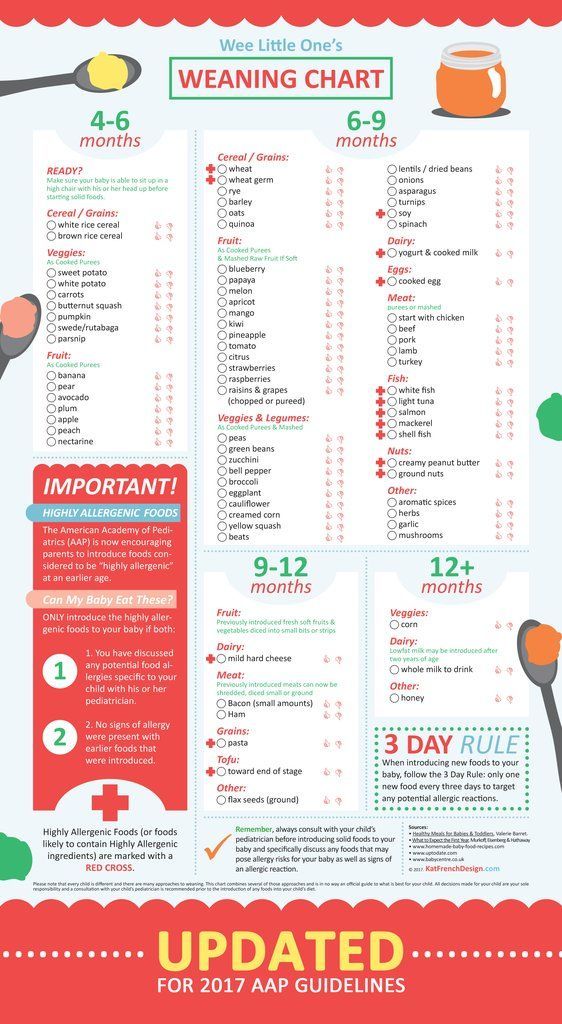 if your baby has been eating vegetables and cereals since 4 months, meat can be introduced at 6 months. From 7 months it can be administered if the child is not gaining weight. From 8 months to children who started complementary foods at 6 months. nine0013
if your baby has been eating vegetables and cereals since 4 months, meat can be introduced at 6 months. From 7 months it can be administered if the child is not gaining weight. From 8 months to children who started complementary foods at 6 months. nine0013
For children at risk for the development of anemia, an earlier introduction of meat at the age of 5 - 6 months is recommended.
It has been proven that only daily use of children's enriched porridge and meat puree can fully meet the needs of children in iron, zinc and other micronutrients.
You can start meat complementary foods with lean beef, veal , but better with less allergenic poultry meat ( turkey, chicken ), or rabbit, these are the most easily digestible meats.
Goose and pork are fatty for the baby, and the meat of duck and other birds of the reservoirs is also not suitable for the first feeding. They are recommended to give only after 3 years;
They are recommended to give only after 3 years;
Horse Meat is perfect for your little one. The product is rich in carbohydrates and proteins, but it is almost impossible to find horse meat for sale.
Meat should be introduced into the child's diet gradually, at lunchtime, first a quarter of a teaspoon and, gradually adding, bring it up to the daily norm: At 8 months, about 50 g, at 9months-60-70 g.
Video: Power feeding meat
Scheme for the introduction of puree
- 1 day ¼ of the vegetables
- Day 2 - ½ teaspoon
- Day 3 - 1 teaspoon
- Day 4 - 2 teaspoons
- Day 5 - 3 teaspoons
- Day 6 3-4 teaspoons + vegetables
At first, it is better to give meat with vegetable puree, which the child has already eaten, so that he adapts better to the new product, and iron is better absorbed. Children at the end of the first year of life can already be given 3 varieties of mashed meat. nine0013
nine0013
Baby menu at 7-8 months
At 7-8 months you can start giving children 0 baby cottage cheese 9000 Start with 1/2 teaspoon. Within a month, the daily volume of cottage cheese consumption by a baby can be increased to 30-40 g. In addition, a child of 8 months is recommended to give sour-milk infant formula. But ordinary yogurt from the store should not be given. At this age, the child should receive 5 g of butter and 5 g (1 teaspoon) of vegetable oil, ¼- yolk - 2-3 times a week. nine0013 Baby's menu at 9 months At the age of 9 months Your baby is already familiar at this age already usually familiar: , egg yolk  It is desirable to feed the baby at the table with other family members, he must see how his parents eat with pleasure, he learns from them. The amount of food offered should be based on the principles of actively encouraging the baby to eat, it is necessary to continue to gradually change the consistency and increase the variety of complementary foods, adhering to the recommended frequency of introducing complementary foods.
It is desirable to feed the baby at the table with other family members, he must see how his parents eat with pleasure, he learns from them. The amount of food offered should be based on the principles of actively encouraging the baby to eat, it is necessary to continue to gradually change the consistency and increase the variety of complementary foods, adhering to the recommended frequency of introducing complementary foods.
At this age, the child usually gets complementary foods 3 times a day . His diet depends on the age of the start of complementary foods. If the baby began to give new food at 4-5 months, the list of allowed foods will be much wider than if this happened at 6-7 months. Therefore, all this is very individual, there are no absolutely rigid frameworks and recommendations. On the Internet you will find a lot of different advice on baby food, if you are not sure about something, it is better to consult your pediatrician.
From vegetables the baby can be given what he ate before, mixing them: pumpkin, zucchini, cauliflower, broccoli, carrots and others, adding 1 tsp. vegetable oil . If the baby does not have skin reactions, then you can give beets . It is also possible to give two-, three-component vegetable purees and soups , but only on condition that he is already familiar with these products and he has not had a reaction to them. nine0621 If you have introduced complementary foods, then you need to remember that water is an important part of baby food. You can use purified water or special water for children .
vegetable oil . If the baby does not have skin reactions, then you can give beets . It is also possible to give two-, three-component vegetable purees and soups , but only on condition that he is already familiar with these products and he has not had a reaction to them. nine0621 If you have introduced complementary foods, then you need to remember that water is an important part of baby food. You can use purified water or special water for children .
In addition, at 9 months you can give special baby wheat cookies , which the baby will be happy to eat on his own as an adult, white wheat bread, this improves hand motility, improves eating skills, but at the same time he must be supervised. nine0621 At this age, you can start giving fish puree from low-fat varieties: river perch, pollock, hake, haddock, zander, pollack - start with ½ teaspoon, bringing up to 40-50 g , watching the reaction of the child , give at lunchtime instead of mashed meat, 1-2 times a week. But a number of pediatricians do not advise giving it up to a year, it is a useful, but highly allergenic product.
But a number of pediatricians do not advise giving it up to a year, it is a useful, but highly allergenic product.
Baby menu at 10 months
B 10 months usually 2 times a day the child receives the mother's breast or special milk formulas . Various cereals: buckwheat, rice, corn, oatmeal, wheat, semolina porridge . add 5-10 g of butter to cereals. At this age, it is already possible to make complex cereals from 2-3 cereals with which the child is familiar, add various fruits, vegetables: apple, banana, pear, plum and prunes, apricot and dried apricots, broccoli, carrots, berries nine0005 , provided that the child is not allergic to them, or use ready-made cereals with fruit.
From vegetables the baby can be given what he ate earlier, mixing them: pumpkin, zucchini, cauliflower, broccoli, carrots, beets and others, adding 1 tsp.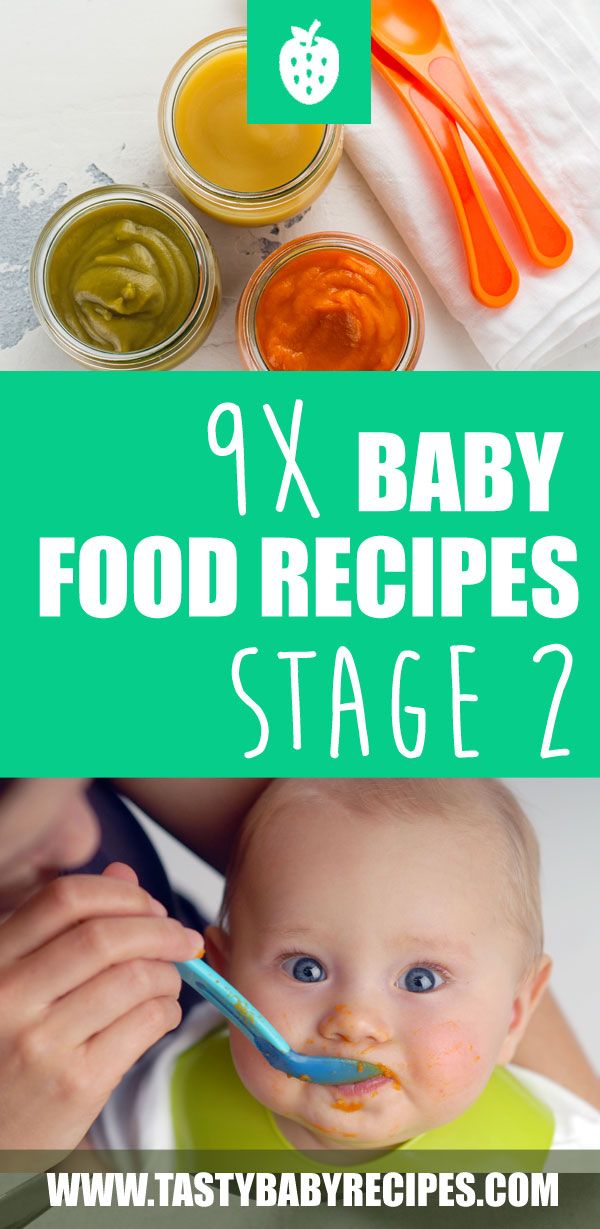 vegetable oil . It is also already possible to give two-, three-component vegetable purees and soups, but only on condition that he is already familiar with these products and he did not have a reaction to them. nine0621 At this age, the baby already usually eats about 40-50 g of baby meat puree from chicken, turkey, rabbit , with good tolerance to cow's milk proteins from veal or beef. If he has been eating meat for a month or more, you can start giving him two-component meat purees , for example from chicken and turkey.
vegetable oil . It is also already possible to give two-, three-component vegetable purees and soups, but only on condition that he is already familiar with these products and he did not have a reaction to them. nine0621 At this age, the baby already usually eats about 40-50 g of baby meat puree from chicken, turkey, rabbit , with good tolerance to cow's milk proteins from veal or beef. If he has been eating meat for a month or more, you can start giving him two-component meat purees , for example from chicken and turkey.
At this age, fish puree from low-fat varieties is usually started: river perch, pollock, hake, haddock, pike perch, pollock with ½ teaspoon, bringing up to 40-50 g, following the reaction of the child, it is better to give at lunchtime instead of mashed meat, 1-2 times a week .
At 10 months, children's cottage cheese should be given 2 times a week. Start with 1/2 teaspoon if you have not given it before, the daily amount of cottage cheese at this age is 40-50 g .
Start with 1/2 teaspoon if you have not given it before, the daily amount of cottage cheese at this age is 40-50 g .
It is recommended to give special sour-milk baby formulas. nine0621 At this age, a child can receive 5-10 g of butter and 5 g (1 teaspoon) of vegetable oil, and 2-3 times a week½ - yolk .
Child's menu at 1 year old
The child is one year old. He has already grown up, he already has 6-10 teeth, with which he gnaws everything he sees, he is interested in chewing food, his digestive enzymes already work well and he has already become acquainted with various products: vegetable and fruit purees, various cereal cereals, meat and fish, sour-milk mixtures. In fact, he is already prepared for the transition to a more adult diet. In a year, changing the diet involves turning to new products and gradually changing the way they are prepared and the degree of grinding. nine0621 You need to eat 5 times a day with an interval 3.5-4 hours .
nine0621 You need to eat 5 times a day with an interval 3.5-4 hours .
semi-liquid dishes should still remain the basis of nutrition, but not only mashed dishes, but also containing small pieces of food . Too dry food should not be given to the baby yet, as he may have difficulty swallowing.
In the year the child already tries to eat with his hands and he should be encouraged to do so. Finely chopped, soft foods can be given eg: small pieces of soft fruit, vegetables, cheese, well-cooked meat, pasta , etc. and foods that dissolve quickly, children's biscuits, children's crispbread - as food with the help of hands.
It is necessary to avoid products that can enter the respiratory tract and cause asphyxia - sausages and other hard meat products , nuts (especially peanuts), grapes, raisins, raw carrots, popcorn, round candies . Hold off on this for now.
Hold off on this for now.
In a year, part of the children are without mother's milk. But if your baby is still not weaned - do not rush, if possible, give him a breast before bed at night. You can also breastfeed between main meals. At this age, the child receives all the main vitamins and minerals from food, but he can get a number of biologically active components from breast milk. nine0013
Dairy products
Dairy products still occupy an important place in the child's diet, it is a source of calcium, B vitamins, protein, milk sugar and fat. It is better to use special baby milk (marked with a triple on the packaging), baby fermented milk products: kefir, yogurt in total 500-600 ml per day .
Cottage cheese
The child should be given cottage cheese. The daily dose of cottage cheese after 1 year can be increased up to 70 g per day . It can be given pureed or combined with fruit puree, pudding, casserole. This contributes to the development of chewing skills.
It can be given pureed or combined with fruit puree, pudding, casserole. This contributes to the development of chewing skills.
Butter
Butter can be added to cereals or smeared on wheat bread, cookies in a dose of up to 12 g per day.
Low fat sour cream and cream
After 1 year, you can give low-fat sour cream and cream in small quantities.
Vegetables
Every year a child must be given various vegetables , it is good to combine them with protein products, meat . The vegetable diet can now be diversified with green peas, tomatoes, turnips, beets, carrots, spinach in the form of mashed potatoes. Legumes are still better not to give.
Fruits and berries
After 1 year, you can gradually introduce the baby to new fruits and berries: strawberries, cherries, cherries, kiwi, currants, gooseberries, chokeberries, sea buckthorn, raspberries, blackberries, cranberries, blueberries, lingonberries and even citrus fruits .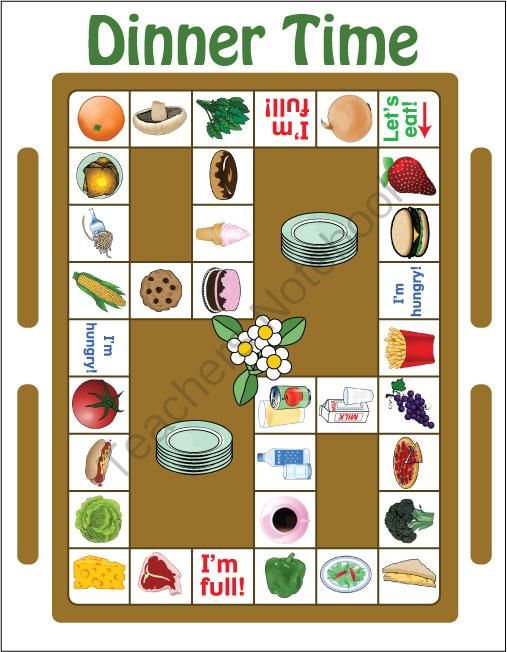 But do it gradually, watching the reaction of the child. Berries with a dense peel (gooseberries) are best mashed, while soft juicy fruits (peaches, strawberries, apricots, kiwi) can be offered to the baby in pieces. nine0621 Daily dose of fruits - approx.
But do it gradually, watching the reaction of the child. Berries with a dense peel (gooseberries) are best mashed, while soft juicy fruits (peaches, strawberries, apricots, kiwi) can be offered to the baby in pieces. nine0621 Daily dose of fruits - approx.
Meat products
Meat products can be given in the form of steam cutlets, meatballs, meatballs, meat soufflé and pudding in an amount up to 100 g daily - beef, veal, lean pork, rabbit, turkey, chicken.
Fish
Fish can be given once or twice a week for 30-40 g per meal as a substitute for meat dishes
Eggs
Chicken, quail eggs give boiled or in the form of omelets in milk, you can try with vegetables.
Kashi
Porridge can be cooked from rice, oatmeal, buckwheat, corn, millet, semolina. At this age, they should still have a uniform consistency, so it will be easier for him to swallow. You can use ready-made industrial, children's instant cereals, for example, various multi-cereal cereals, in which fruits, crackers, cereals have already been added. Give 1 time per day. nine0013
At this age, they should still have a uniform consistency, so it will be easier for him to swallow. You can use ready-made industrial, children's instant cereals, for example, various multi-cereal cereals, in which fruits, crackers, cereals have already been added. Give 1 time per day. nine0013
Water
Be sure to give the child clean water to drink, better bottled water for children, as much as he wants . In addition to her baby can drink vegetable and fruit juices, dairy products, compotes, weak tea.
No need to give:
no need to give confectionery and sweets to a child 0005 . From sweets at this age, you can sometimes give marmalade, dried fruits and cookies.
Do not give sausages and sausages , they are rarely prepared from high quality meats and are rich in various food additives
Calorie content and volume
0003 1200 ml .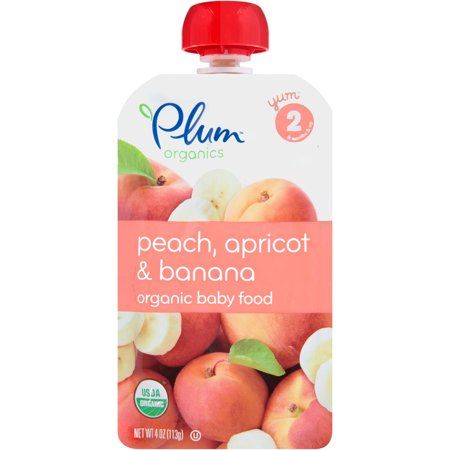
Table for complementary foods by month: Download
All videos: Putting a child for a child from 4 to 12 months
Let your children be healthy and successful!
Other news in category
Newborn - online course "Mom's Way: Newborn" from Professor Nyankovsky on caring for a baby in the first months of life
Baby's first litter. Porridge or vegetable puree?
First complementary foods - rules: how and when to introduce complementary foods while breastfeeding
20.09.2018
≈ 11 min read time
Content
- Choose the type of food that is best nine0034
- When to introduce complementary foods
- General rules for introducing complementary foods by timing nine0033 Home cooking or industrial products?
- We introduce vegetables (vegetable complementary foods)
- Feeding a child with porridge nine0034
- Fruit puree: start complementary foods
- Introducing fruit juices nine0033 Meat: first food
- How to introduce meat supplements?
- Chicken egg in baby food nine0034
- How to solve the problem of refusal of complementary foods
When to start the first feeding? If the child has already had the first tooth and has awakened an interest in the food that he sees, and your pediatrician does not object to the introduction of complementary foods, then you can start. Let's learn the rules. nine0013
Let's learn the rules. nine0013
Let's see how the two main areas in complementary foods differ from each other: pedagogical and pediatric.
- Pediatric complementary foods are the most common and recommended by pediatricians. According to this technique, the baby is offered special baby food, the first complementary foods are introduced according to the scheme, the order in which the products are introduced is important. At the same time, it is not recommended to abruptly replace breast milk with complementary foods. It is advised to introduce complementary foods from 4 to 6 months, the child is not entertained with food and is not forced to eat. nine0034
- Pedagogical (or natural) complementary foods for babies are called so because this approach is based on the desire to arouse the child's interest in food, form healthy eating behavior, and teach him to behave at the table. Within the framework of this technique, there are no longer special feeding schemes.
Many nutrition consultants recommend a combination of these two approaches. We will talk about pediatric complementary foods.
We will talk about pediatric complementary foods.
According to the recommendations of the Union of Pediatricians of Russia, it is recommended to introduce complementary foods in the range of 4-6 months. At this time, the growing body needs more and more vitamins and minerals every week, and the later introduction of complementary foods can cause a pronounced deficiency of some micronutrients. In addition, the enzyme system of the gastrointestinal tract of the child is already ready to accept new food, and he himself begins to show interest in food. nine0013
Our grandmothers said that a child is ready for solid food when you can knock loudly on a tooth with a spoon.
But it's important to remember the following:
- during teething, the baby is busy with his sensations and his interest in food is reduced;
- Complementary foods cannot be introduced before 4 months, because the baby's body is not capable of assimilating food other than breast milk or formula;
- do not introduce complementary foods after 6 months to prevent nutritional deficiencies in the baby's diet; nine0034
- Complementary foods should be introduced after consultation with a pediatrician.

- Vegetable puree is introduced from 4-6 months. If the child has insufficient weight gain, frequent stools, then it is better to start introducing complementary foods with gluten-free dairy-free porridge.
- No need to start the first complementary foods with fruits and juices: having become acquainted with sweet tastes, the baby may lose interest in vegetables and any other.
- The second food should be offered to the child 3 to 4 weeks after the first. nine0034
- The same amount of time must elapse before you offer your baby a third solid food.
- Here's how to introduce basic foods into the diet: porridge, then vegetables and meat; porridge, then meat and vegetables; vegetables, then porridge and meat; vegetables, then meat and porridge.
- Of course, during the introduction of complementary foods to a newborn, breastfeeding should continue, it is still in the first place.
- The baby can try fruits and juices after the first or second complementary foods - but only as a treat, not the main meal.
 nine0034
nine0034 - Egg yolk is desirable to offer the baby when he is almost a year old.
- Adapted sour-milk mixtures are a "children's" version of kefir, they can be given to a baby at 9 months.
- How many times a day can a baby be fed at 8-9 months? At this age, you can give him 3 servings of complementary foods per day, and the total weight of "adult food" at this age is 400 - 600 g per day.
Industrially produced cereals and purees give a 100% guarantee that the products have passed all stages of testing and are safe for the child. You can be sure that they do not contain heavy metal salts or pesticides, not to mention nitrates or GMOs. Therefore, cereals are great for the first complementary foods. But mashed potatoes that are prepared at home may contain harmful impurities, even if the original vegetables and fruits were grown on their own. nine0013
Trust only trusted manufacturers such as Agusha. From the First Spoon range of products, you can choose delicious and healthy dishes - in accordance with the age of the baby and his preferences.
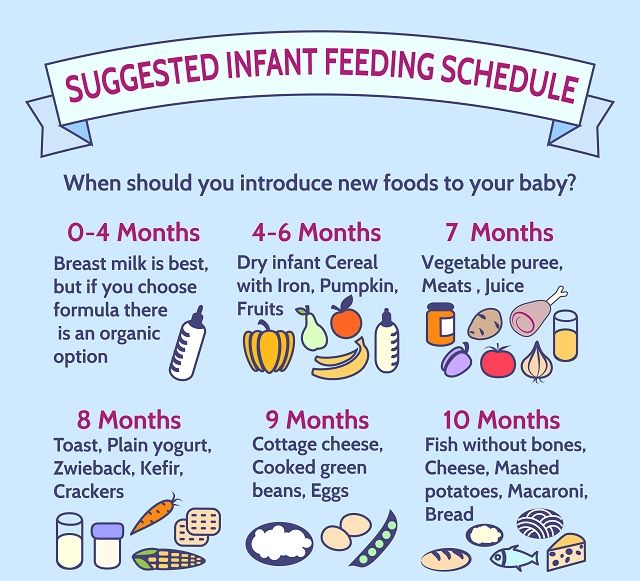
What and in what order to introduce for complementary foods will be advised by your pediatrician, who knows everything about the development and health of your child and has enough experience to make recommendations.
Most often, as the very first feeding, children's nutritionists and pediatricians recommend vegetable purees or cereals. At the age of about 4 - 6 months, the baby's body is already ready to take the first puree food and get acquainted with new tastes. Therefore, vegetables, the puree of which is the least likely to cause allergies in infants, are traditionally considered the first "adult food" of babies. What are these vegetables? nine0013
The very first “test” products for breastfed babies in our latitudes are traditionally considered hypoallergenic zucchini and cauliflower, and then broccoli and pumpkin. The baby should be allowed to try complementary foods from zucchini no earlier than 4 months, exclusively in the form of a completely homogenized, that is, without pieces, mashed potatoes.
Safety is above all!
The ingredients used in the preparation of commercially produced baby purees are grown on the territory of specialized farms in environmentally safe places and undergo multi-stage testing, so such purees are the safest for the child. nine0013
The introduction of complementary foods is an important step in the development of the child, a serious stage of growing up. Children's vegetable purees "Agusha" have been carefully tested and are prepared in compliance with all safety rules - they introduce the baby to new tastes and help to smoothly switch to new food.
How much puree to give the baby:
First of all, it is worth determining whether the baby has an allergy to the selected product. Therefore, the first purees are given in the afternoon, after the morning breastfeeding. nine0013
- The baby is offered very small portions at first - from 1/4 to 1/2 teaspoon per day.
- For a week, the amount of puree is brought to approximately 7 teaspoons per day.
 Of course, only if the little gourmet liked this dish and the crumbs were not allergic to it!
Of course, only if the little gourmet liked this dish and the crumbs were not allergic to it! - Again, to avoid allergies, the little taster should try no more than one vegetable puree per week. At the same time, no matter how much a young mother wants to experiment with tastes, the first purees should be monocomponent, that is, consist of one ingredient. nine0034
- In no case should mashed potatoes contain salt and sugar - such products should not be introduced into the diet for at least a year.
Only after the baby has approved all the main types of "safe" vegetables, you can start mixing them. In the event that one of the products is unequivocally rejected by the child, it is worth remembering about it in about a month: perhaps the grown-up baby will reconsider his attitude to the previously “rejected” vegetable. Plus, your little one just might not like the serving form or the amount of puree, so try again! nine0013
After the first vegetables (zucchini, cauliflower, broccoli, pumpkin), at the age of 7-8 months, potatoes, white cabbage, and carrots are introduced (with caution, with colic and bloating in a child).

The next after the main vegetables for baby food are potatoes and white cabbage (be careful with the introduction of these products into the diet for colic and bloating!), As well as carrots.
Vegetables that can cause allergies in babies (sometimes severe) traditionally include tomatoes, vegetables of bright colors, including bright orange pumpkin, carrots, celery, beets, and green peppers. Their children should be given carefully, completely excluded from the list for the first feeding, if there were cases of allergy to this product in the family. nine0013
Porridge is traditionally introduced as complementary foods after your baby has already become familiar with vegetables. This usually happens within a period of about six months and not earlier than 4 months. Complementary foods for a formula-fed or mixed-fed baby may consist of porridge a little earlier than “babies”.
With what porridge to start complementary foods? The fact is that the main protein of cereals, gluten, in babies can cause severe allergies and such unpleasant phenomena as pain and bloating. nine0013
nine0013
So you need to start with gluten-free cereals: rice and corn grits. Buckwheat porridge is also very good for feeding.
- Start with one type of cereal and then gradually, a week after the introduction of the first cereal, offer the baby a new one, even later you can switch to a mixture of cereals.
- Preference should be given to cereals of industrial production - as they meet high safety standards, are made on the basis of proven raw materials and have the right consistency, ideal for a small body. nine0034
- Try a dairy-free porridge made with water or breast milk (or, for formula-fed babies, the formula you normally feed them) to start with.
- Complementary foods and constipation. If the child is prone to constipation, it is better to give up rice porridge, preferring buckwheat or corn. Dairy-free cereals are suitable for children with lactose intolerance or those prone to allergies.
It is worth starting to give porridge with small amounts - literally from half a teaspoon, gradually increasing the volume to 100 g per week.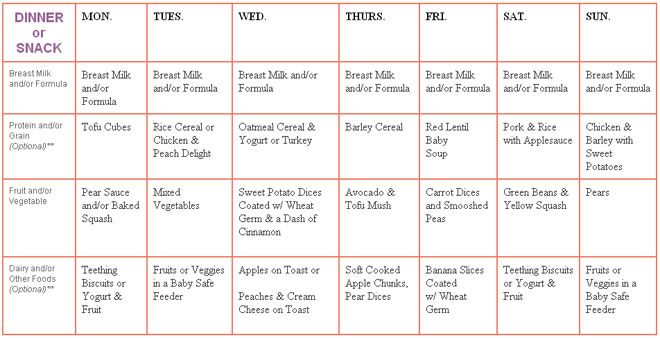 Moreover, first introduce one type of porridge and after about a week or two, move on to another. nine0013
Moreover, first introduce one type of porridge and after about a week or two, move on to another. nine0013
To the question "What time can a child have semolina", we answer - because of the gluten content, it can be introduced not earlier than one of the recommended first cereals (buckwheat, rice), and not earlier than 10-12 months.
First, offer the baby monokashi and only then - cereals from several components or with additives. It should be borne in mind that millet, oats, barley groats and semolina contain gluten, which means that they can be given as complementary foods later than other cereals.
nine1133After the child has tried vegetables and cereals, he can get acquainted with fruit purees. The baby may like this taste so much that he will begin to refuse those dishes that he ate before. To avoid this, you can start by adding just a little fruit puree to your cereal or vegetables.
- At first, apple and pear puree is given to babies, because they are rarely allergic.
Then you can offer the child a peach, apricot and plum.
- Do not mix different flavors, let the baby try them one by one. nine0034
- If mum cooks mashed potatoes at home, then there is no need to add sugar: baked fruits are already quite sweet.
Juices are offered to a baby at the age of 6 - 12 months. As the very first new taste, it is recommended to give babies one-component green apple juice without pulp. Such juice, as a rule, is the least allergenic. Children's nutritionists advise starting with commercially produced juices, since both the ingredients themselves and the production process of these products are very rigorously tested. The above applies to juices and compotes "Agusha", created from selected natural ingredients. They contain useful minerals (such as potassium), dietary fiber (in mashed potatoes and juices with pulp), which will be a valuable addition to the daily diet of the baby and mother. nine0013
Correct quantity.
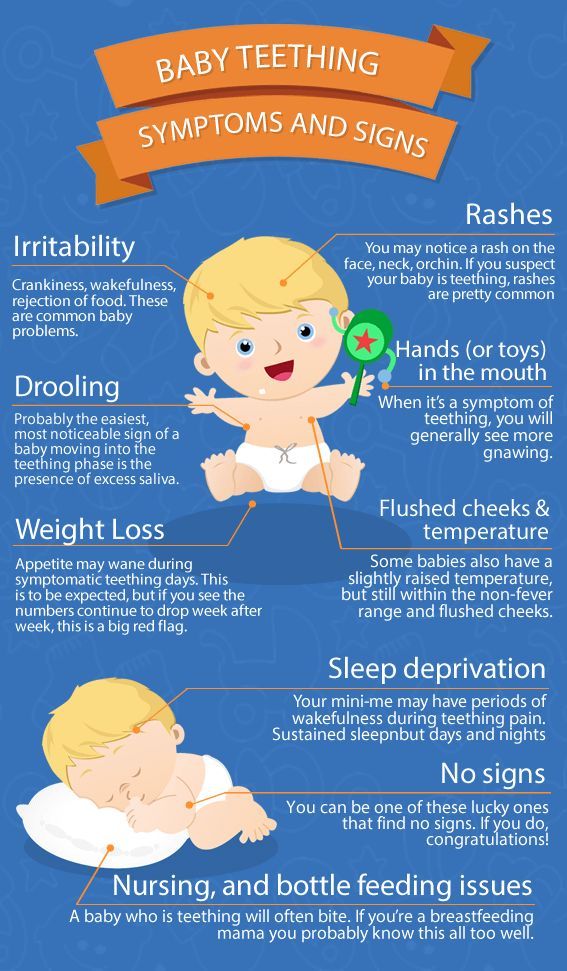
Giving a try to apple juice to the baby should be after morning feeding, one teaspoonful. If the little gourmet reacted well to his first "adult" drink, the next day the crumbs can be given one more spoonful of juice. During the second week, the volume of juice can be increased to 30 g per day, and the number of doses - up to 2 - 3 per day. By 12 months, a child's daily diet may contain about 100 g of a drink. nine0013
It is safest to start introducing juices into a child's diet with apple juice. Agusha clarified apple juice has been clinically proven to be a hypoallergenic drink. The entire product line of Agusha. The first spoon" was created specifically for the first complementary foods. They are made from natural ingredients and undergo strict quality control, so you can be sure that you will choose the right first food for your baby.
- 2-3 weeks after apple juice, the child can be given other one-component juices without pulp: pear, banana, peach, apricot, plum, pumpkin.
These products should not contain sugar, which is not recommended for infants. If the baby perceives the new product well, then his menu can be varied with juices from cherries, black currants. nine0034
- After another 2-3 weeks, juices from several ingredients can be introduced: apple - pear, apple - pumpkin, apple - apricot, etc. Juices with pulp - apple, apricot, peach, plum - contain dietary fiber and are able to participate in maintaining bowel function. Kids love their thick and rich taste!
- Be careful with juices from fruits, vegetables and berries that are allergens: strawberries, citrus fruits, raspberries, tomatoes - they are introduced into the diet of children not earlier than a year. If, after drinking any juice, the baby has an allergic reaction (diathesis, rash, urticaria), then it should be immediately excluded from the diet. nine0034
Meat complementary foods can be introduced into the baby's diet no earlier than 6 months. Meat complementary foods are, first of all, the main source of protein in the diet of a child.
From 100 g of meat, he receives 14 - 16 g of protein containing a complete set of essential amino acids. Plus iron, zinc, some B vitamins.
The first meat foods are rabbit, turkey, chicken. After them, you can enter veal, beef, horse meat. Today it is believed that it is better to use industrial-made meat purees, as these canned foods undergo strict quality control and, accordingly, are safe for the baby. Refrain from buying meat in unfamiliar places. nine0013
- Beef is rich in protein and iron, contains minerals including phosphorus and potassium, as well as some B vitamins. Babies allergic to cow's milk can sometimes develop an allergy to beef protein, in which case it can be replaced with other types of meat for the first feeding - rabbit or turkey.
- Compared to other types of meat, rabbit meat contains the maximum amount of protein - about 20%, and the proportion of fat, on the contrary, is minimal - about 15%. In addition, rabbit meat is very juicy and tender - and kids adore it.
nine0034
- Turkey is low in calories and low in fat, but its meat is very nutritious.
- Chicken, according to the standards of modern pediatrics, should not be given to children before a year. An exception may be industrial-made baby puree or home-breeding poultry meat purchased from a trusted place.
- As for pork, this meat has a very high fat content, so it is not suitable for children's diet. It is better to wait with the introduction of pork into the children's diet until 2.5 - 3 years. nine0034
Rules for introducing meat complementary foods:
When introducing meat into complementary foods, you must adhere to the following rules:
- You need to introduce meat from half a teaspoon, gradually bringing the weekly weight up to 30 g. It is worth leaving the amount unchanged for several days, checking the child's reaction to a new product. After all, we need not only to feed the baby, but also to avoid allergies!
- Since the mother already knows which vegetable purees the child eats with a bang, they can be mixed with the first meat puree.
So the baby will be “clearer” to the new food. nine0034
- At 8 - 8.5 months, the baby's diet can contain up to 50 g of meat, and by 1.5 years, the amount of meat in the daily diet can already reach 80 - 90 g, that is, 560 - 630 g per week.
- Rabbit meat is considered ideal for children prone to allergies, as well as those experiencing digestive problems.
- Toddlers love a homogeneous consistency - after all, pieces of food are still quite unusual for them. Homemade puree has a coarser "structure" and is often rejected by small gourmets. nine0034
Proper nutrition for children who refuse meat
For a child under 1 - 2 years old, meat is not a mandatory component of the diet. If the baby is gaining weight poorly, you do not need to look for reasons solely in an insufficient amount of meat: this can be influenced by heredity, the functions of the endocrine system, a lack of trace elements in the body, and a number of other reasons. It happens that children under one year categorically refuse meat and do not want to eat it in any form.
It's not a disaster. nine0013
- If your baby refuses meat, you should wait one to two weeks before introducing this food and then try again.
- If it is not possible to introduce meat into the baby's diet in any way, it is necessary to include cottage cheese, milk porridges in the menu, and after 9 months - kefir and cheese, which are also a rich source of protein.
Whatever choice your little one makes, whether or not he "sets" for meat in his diet, listen to his desires, don't persist with new foods and don't insist on trying them. Remember that all children are different and each develops at its own pace. nine0013
Let's get acquainted with one of the most controversial products in the children's menu. Often, mothers are afraid to introduce eggs into the baby's diet because of the risk of allergies. At the same time, many believe that this is the most important complementary food of the first year of life.
Benefits of eggs
Without eggs, breakfasts would not be as cozy, birthday cakes would not be as delicious, and children's diets would not be as interesting.
Eggs are very nutritious and have a high energy value. nine0013
- The proteins and fats they contain are well absorbed by the body.
- Eggs are a source of trace elements necessary for children.
- The yolk contains an impressive amount of vitamin D, which is so necessary for the growth of the baby. It helps to absorb calcium, thus participating in the formation of teeth and bones.
- A valuable component of the protein is lysozyme, which has a bactericidal, anti-inflammatory effect.
nine0119For the first time, your baby can try the pureed yolk with Agusha porridge. Take a few grains of hard-boiled yolk, add 0.5 - 1 teaspoon of your favorite Agusha porridge and serve from a spoon.
How to introduce eggs into complementary foods
If at 7 months your baby has already become acquainted with some vegetables and cereals, you can offer him just a few grains of hard-boiled yolk, mixing it with already familiar complementary foods.
By 8 months, you can increase this amount to ¼ of the yolk at a time, and by his first birthday, the child can already eat half the yolk. nine0013
If you notice even the slightest hint of an allergic reaction in a child, then the yolk should be completely excluded from the diet. Unfortunately, allergy-prone children sometimes have to wait over 2 years to try their first egg.
Egg white begins to be introduced into the diet after 1.5 years. However, if you have any doubts that the baby will respond well to a new product, it is better to wait until the age of 2 years with the introduction of protein.
Rules for selecting and preparing eggs:
- The main rule is only fresh eggs.
- Before you start cooking for your baby, the egg should be washed well with a sponge or brush under running water, removing all dirt from the shell.
- Wipe with a cloth or paper towel and leave for a while at room temperature before cooking.
- Babies up to a year should boil eggs in boiling water for up to 10 minutes, and then put them under running cold water.
nine0034
- If you cook an egg over high heat, the protein will become denser than the yolk, and when you cook over low heat, the opposite is true.
- Do not offer your baby boiled eggs that have been stored in the refrigerator.
- Buy eggs only from a trusted manufacturer.
- Raw eggs are absolutely contraindicated for baby food! They may contain salmonella bacteria.
- Eggs of waterfowl (ducks, geese) should be completely excluded from the child's diet, as they can be infected with pathogens of dangerous infections. nine0034
Allergic children often take quail egg yolk well - it can be introduced into the diet at the age of about a year. Therefore, quail eggs can be an excellent alternative to chicken eggs, and they can also be included in the usual children's meals. Quail eggs are richer in vitamins and nutrients than chicken eggs, however, during heat treatment, their beneficial properties become almost identical.
Salmonella is rare in quail eggs, as their thick shell membrane prevents the penetration of this pathogenic bacterium.
Also, due to the high body temperature, quails are resistant to infectious diseases, so they are kept without vaccination. nine0013
The time to get acquainted with the "adult table" has already come, but the kid still refuses to take this issue seriously? He throws himself and spits, screams and turns away from the dishes lovingly prepared by his mother? Let's try to figure out what's going on.
First, do not worry: almost everyone faces this problem. Some babies from the very first spoonful of complementary foods "go into protest." For others, the initial interest in food is replaced by the search for "new forms" of its use. Still others may even be truly scared of an unfamiliar product. Try to listen to what the baby is telling you with his actions, and make a decision based on this. nine0013
- If the baby refuses the bottle and spoon from the very beginning. Maybe he's just not ready yet. Be patient and in no case do not force the child to eat when he does not want to.
Place him in a high chair or in your arms when the whole family is at the dinner table - let the baby show interest in the spoon and the contents of the plates before you give him his own dinner set. It also happens that, flatly rejecting the bottle, the baby happily tries to drink from a straw or from a children's drinking cup. Or refusing vegetable puree, the baby reaches for pieces of the same vegetables. Try different options, for sure you will find something that you can interest your baby. Well, if he continues to resist, postpone attempts for a week or two, the right moment will definitely come. nine0034
- If a child tries some foods but violently refuses others. Treat the little rebel with understanding, because for the first time he had the opportunity to study his tastes and declare them to others. Follow a feeding schedule, but don't be too rigid. Some foods not loved by the baby can be “skipped” and introduced a little later (most importantly, not earlier!) Of the recommended age.
Every month, the baby’s diet expands, you can try new recipes: make cocktails from your favorite and unloved purees, add vegetables and fruits to cereals and even fermented milk shakes. In any case, try to follow the same eating rituals every time and introduce the baby to a new dish only when he is in a calm atmosphere and good mood. And do not abuse sweet foods, fruit purees and children's cookies, it is better to start with neutral flavors (vegetables, cereals, dairy products). By the way, do not forget about the current WHO recommendations regarding the timing of the introduction of complementary foods: now the recommended age is 4-6 months, regardless of the type of feeding the baby (subject to sufficient weight gain). nine0034
- If the child uses food for entertainment. For a small child, food is the main way of knowing the world, and also an important channel of communication. Scattering food all over the kitchen, smearing it on the face and table, splashing from the drinker, the baby not only explores new substances, but also observes the reactions of others.
If his actions turn into an active reaction on the part of adults, it is highly likely that next time he will want to try this “method of influence” again. Therefore, try to keep a reasonable middle ground in this matter and follow the same pattern of actions: do not scold the child and in no case punish, but calmly and confidently take away food from him if he indulges, and eliminate (perhaps together with the child) mess. nine0034
- If the baby has tried a new food well, but suddenly reacts by screaming and crying to the new food. In the world of children, there are many inexplicable things for adults. The baby may be frightened by something that seems familiar to us. A large raspberry may seem like a caterpillar, a bunch of mashed potatoes may reveal the smile of an unknown creature, and the smell of a new dish may remind you of some kind of negative experience. Or maybe he just has a stomach ache. Tiny is still too small to explain his feelings. Be calm about his reaction and do not insist on continuing the meal if the child cries and screams.
nine0034
Parents, like kids, should take the process of nutrition a little less seriously at first. Let your child tinker with curds, purees and pieces of fruit to get to know and “make friends” with unknown foods; the main thing is that this happens in a different environment and with other rituals than eating. The child should know that although the process of tasting new foods is terribly interesting, play and food are still different things. And of course, be patient - your young gourmet will definitely learn good table manners and, perhaps, even invent gourmet dishes himself. How to get your child interested in food nine0013
- Do 'tastings' of new foods only when your baby is healthy and in a good mood.
- Particular attention should be paid to the condition of his tummy. If the child suffers from colic or indigestion, new complementary foods should not be introduced.
- Let your baby try a new product not at the first, but at the second or third feeding (in the morning) before offering breast or infant formula.
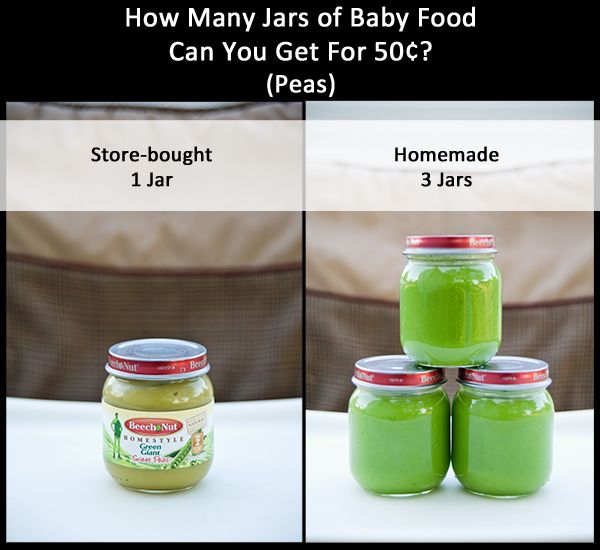
Learn more


